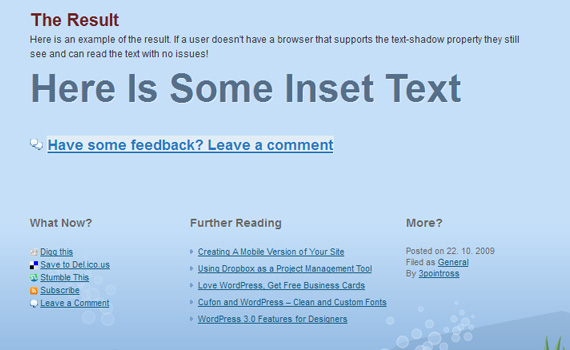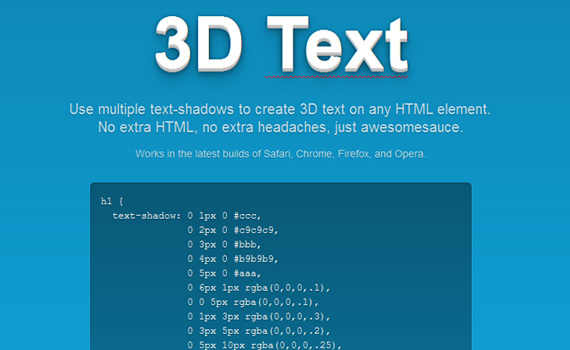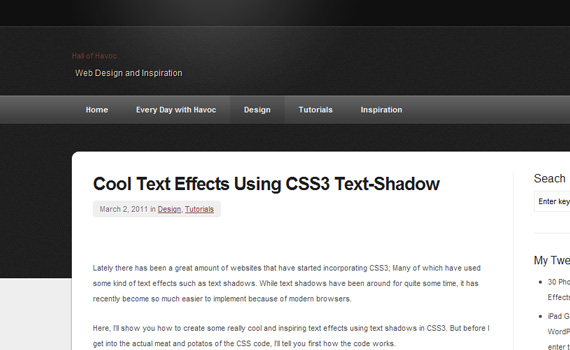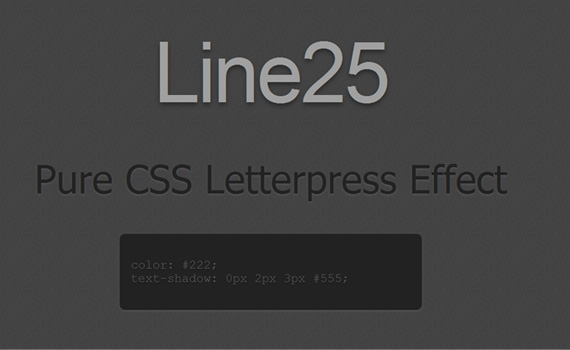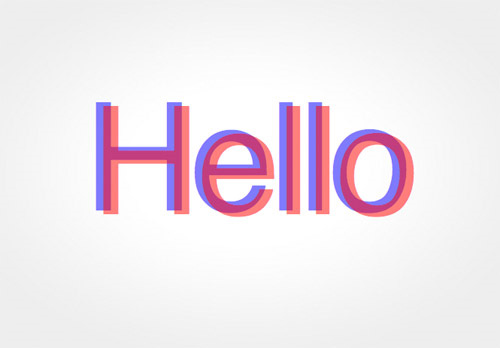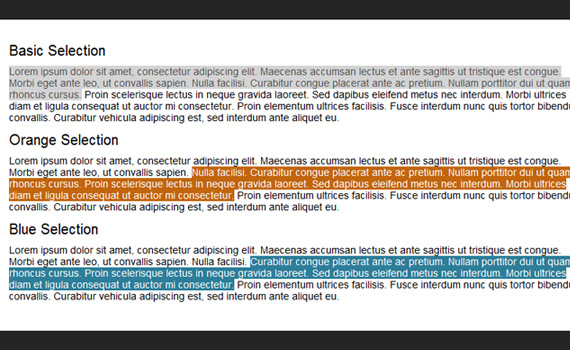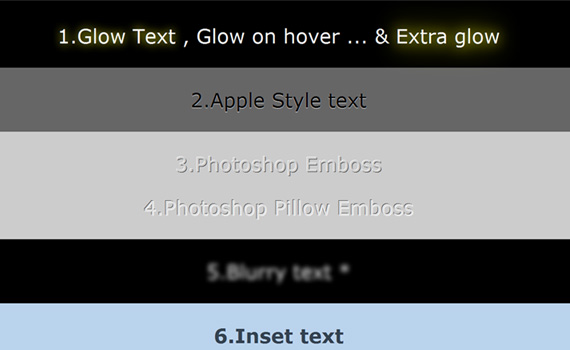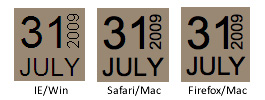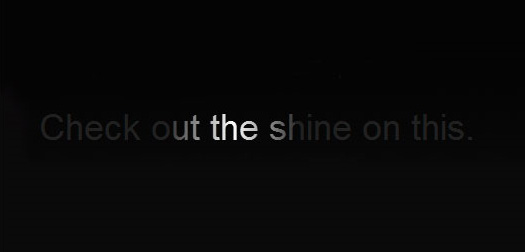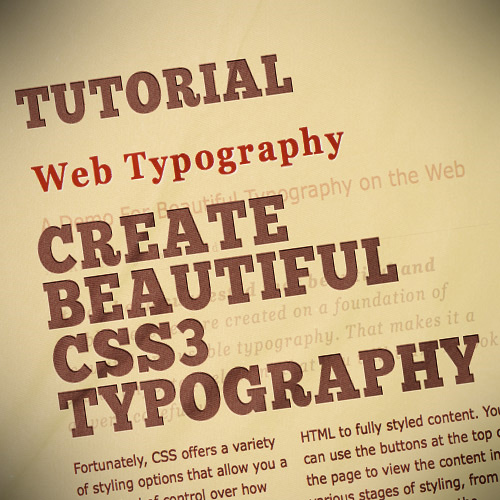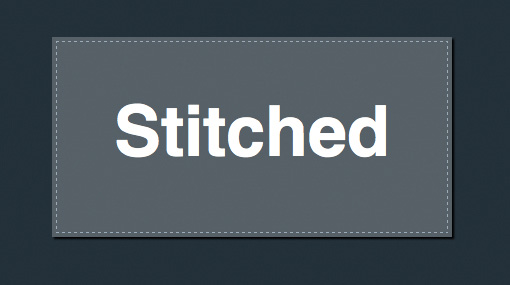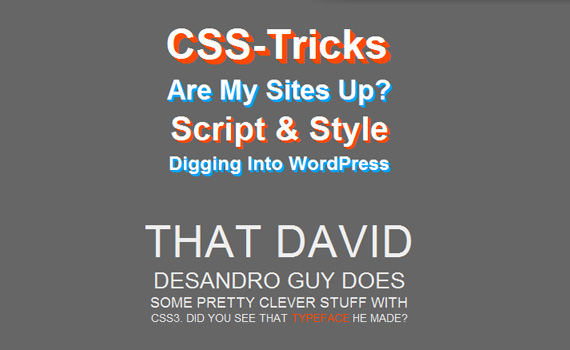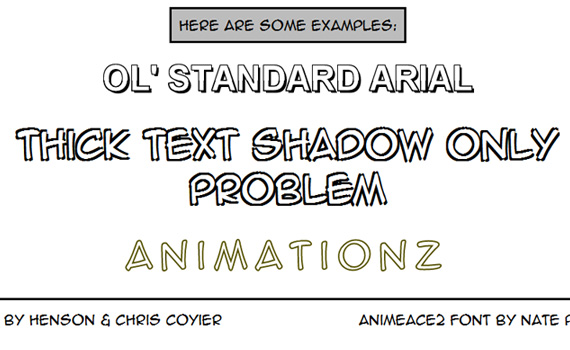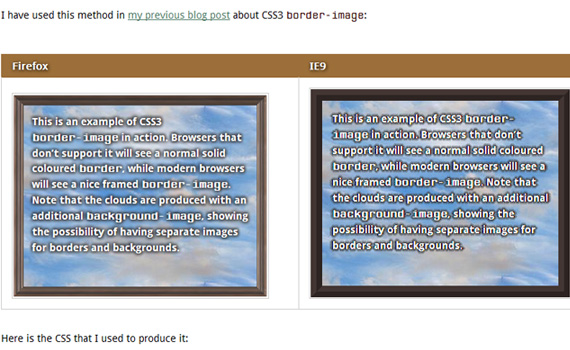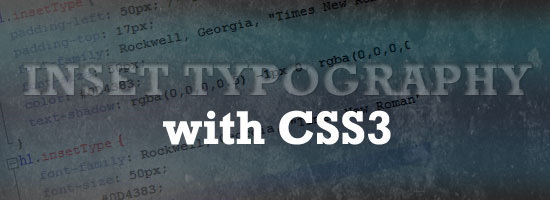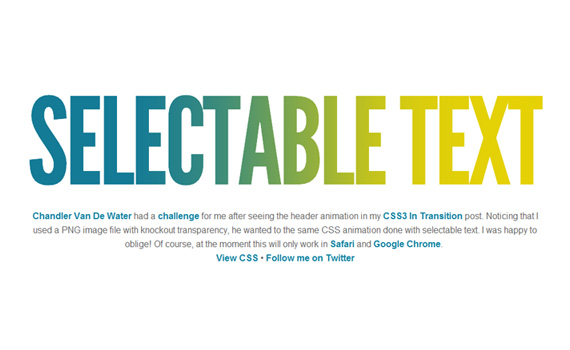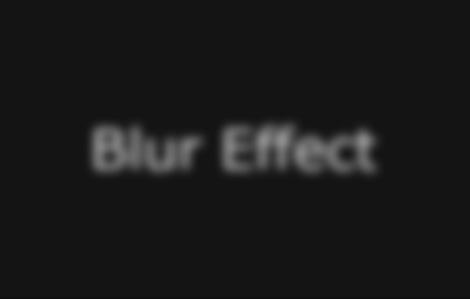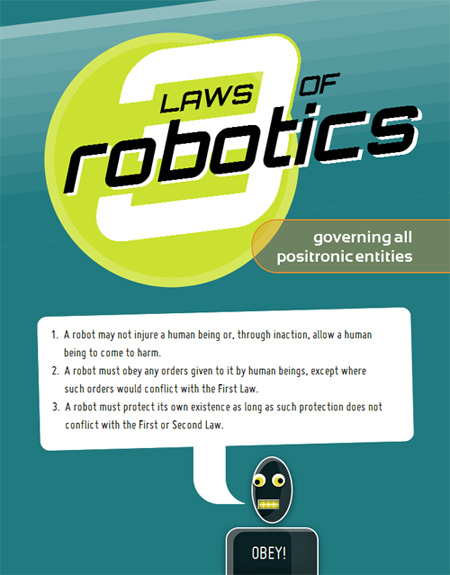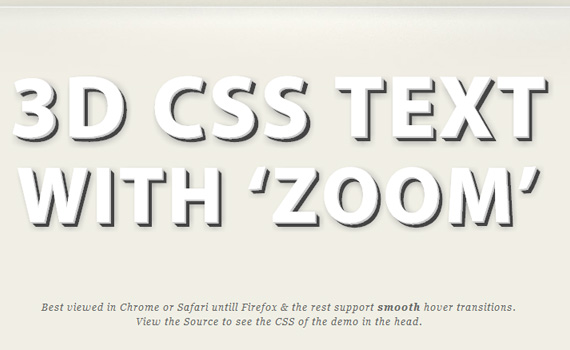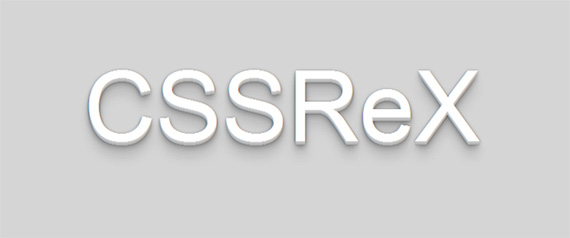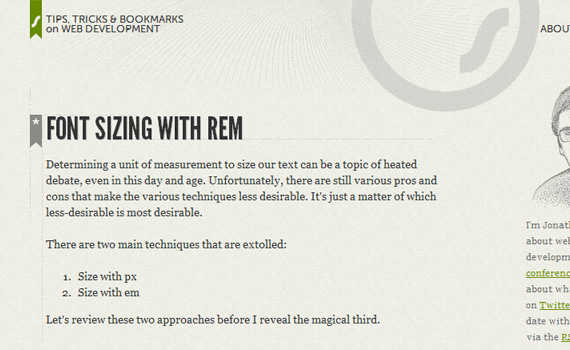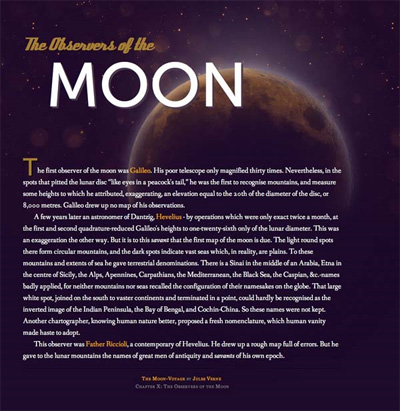1. How to Create Inset Text With CSS3
In this tutorial you are going to use the text-shadow property that is currently supported by most of the major browsers to create the appearance of inset text. Inset text being text that has been pushed into the background, almost like a reverse embossed effect.
2. 3D Text
This is an example of 3D text created merely with CSS3. Use multiple text-shadows to create 3D text on any HTML element.
No extra HTML, no extra headaches, just awesomesauce.
No extra HTML, no extra headaches, just awesomesauce.
3. Cool Text Effects Using CSS3 Text-Shadow
This tutorial shows you how to create some really cool and inspiring text effects using text shadows in CSS3.
4. Letterpress Effect with CSS Text-Shadow
The letterpress effect is becoming hugely popular in web design, and with a couple of modern browsers now showing support for the text-shadow CSS3 property it’s now simple and easy to create the effect with pure CSS.
5. Letterpress Text Effect Using Photoshop and CSS
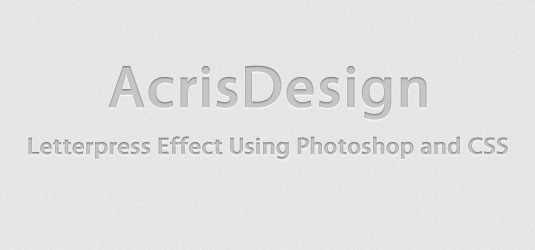
Letterpress effect looks good in modern websites, letterpress effect can be gain using Photoshop and also using text-shadow property of CSS. This tutorial will show you how to achieve letterpress effect with Photoshop and also with pure CSS.
6. Text Embossing Technique With CSS
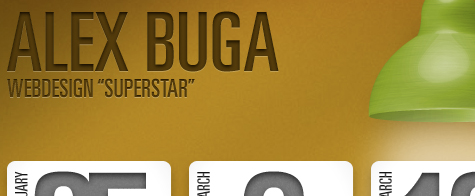
Text embossing has become a huge trend in last couple of years. This tutorial describes how to implement this effect with CSS.
7. Subtle CSS3 Typography that you’d Swear was Made in Photoshop
Learn to use CSS3 text shadows, outlines, transitions, and even text gradients to create cool typography that you’d swear had to be made with a program like Photoshop.
8. Outline Your Text Using the CSS3 text-stroke Property
This tutorial shows you how to add an outline, or stroke, to your text using the CSS3 text-stroke property.
9. How to Create a Cool Anaglyphic Text Effect with CSS
In this tutorial you’ll create a cool transparency overlay effect that closely resembles anaglyph stereoscopic 3D images. To use the effect in web designs you’ll of course build it with CSS, but the main consideration is to keep everything neat and true in our markup.
10. CSS3 Tutorial: How To Change Default Text Selection Colour
Whilst this CSS3 declaration might not be crucial to your project or design and is not supported by all browsers, it’s a fantastic effect that really takes your design one step further.
11. 8 CSS3 Text Shadow Effects
This post covers eight cool text effects you can achieve using CSS3 text-shadow property only .
12. Text Rotation with CSS
In this tutorial you’ll learn to rotate text without images using the transform property.
13. CSS3 Shining Text, CSS2 Flaming Text
Create a fun flaming text effect simply by using some JavaScript and the good old CSS2 property text-shadow and shining text using CSS3 properties and animation.
14. Create Beautiful CSS3 Typography
This tutorial will teach you how to take basic markup and transform it into an attractive and beautiful typographical design through pure CSS3. There are no images or other external resources, just pure CSS magic.
15. CSS3 Cookbook: 7 Super Easy CSS Recipes to Copy and Paste
In this tutorial you’ll find seven fun and attractive CSS tricks that you can grab and insert right into your own projects and customize at will. Keep in mind that since this stuff is still cutting edge, older browsers won’t support most of it.
16. 3D Text Hover
Learn how to create multiple text shadows using CSS3 text shadow property.
17. Adding Stroke to Web Text
Replace programs like Adobe Illustrator and learn how to add stroke to web texts using WebKit.
18. CSS3 Text-Shadow – Can It Be Done in IE Without JavaScript?
IE9 does support the majority of the CSS3 properties, however it doesn’t support image-border and text-shadow properties. This article will deal with text-shadow: how it works in browsers that support it, and strategies developers can use today to emulate some of its functionality in IE.
19. I Heart Blur
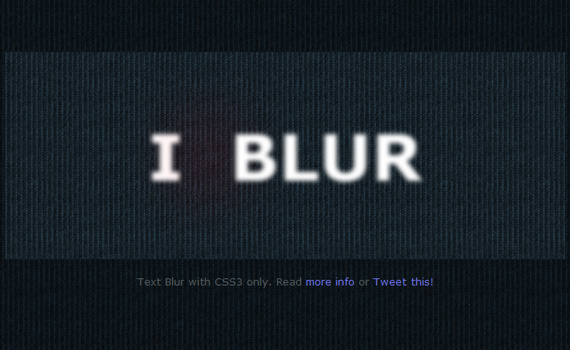
It ain’t exactly a tutorial, however you should check out the code used to create this stunning effect to learn how to add blur to text without using bunch of text-shadow properties.
20. How to Create Inset Typography with CSS3
In this tutorial, you’ll learn to create inset type, a popular text treatment, using only CSS.
21. Quick Tip: Pure CSS Text Gradients
In this short video tutorial you’ll learn how to apply gradients to texts using webkit.
22. CSS3 Background-Clip: Text
Learn to apply CSS transition on a selectable text.
23. How to Use Text Shadow /w CSS3
CSS3 presents many new possibilities when it comes to text effects on websites. The text-shadow property is one of these awesome abilities. This article covers 5 great effects you can achieve using CSS3 text-shadow.
24. CSS3 Poster With No Images
An experiment showing the power of CSS3 techniques. This one uses lovely bits like box-shadow, border-radius, @font-face, transform, box-sizing, text-shadow, RGBa. You can check out the code to discover these impressive features.
25. Creating a True Inset Text Effect Using CSS3
This inset text tutorial differs from others because besides default text-shadow it also uses inner shadow property.
26. 3D CSS Shadow Text Tutorial
This easy CSS text shadow tutorial will show you step by step how to create 3D font with multiple css shadows by stacking multiple CSS3 text shadow properties, then go a step further and use the CSS text transform and CSS transition properties to make the 3D text pop out / zoom on hover.
27. How To Create 3D Text Using CSS3
Learn how we create 3D text using CSS3 text-shadow to heading and paragraph tags.
28. Font Sizing With Rem
CSS3 introduces a few new units in font sizing, including the rem unit, which stands for “root em”. Take a look at it’s features and learn how to create resizable text in all major browsers.
29. Create Attractive Web Typography with CSS3 and Lettering.js
In this tutorial, you’ll look at how to take basic markup and transform it into an attractive typographical design using only minimum images, pure CSS3 magic and we will spice things up with lettering.js – a jQuery plugin for radical web typography.
30. CSS Text Shadow
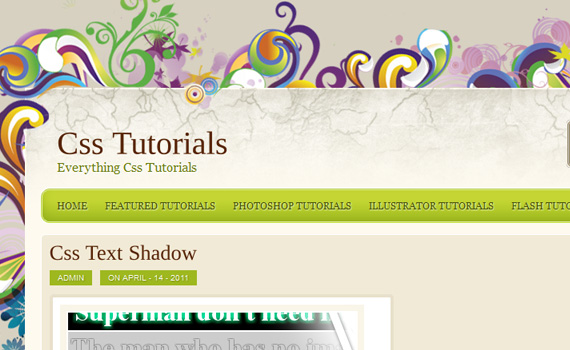
Another tutorial taking you through all the advantages CSS3 text-shadow can give.
